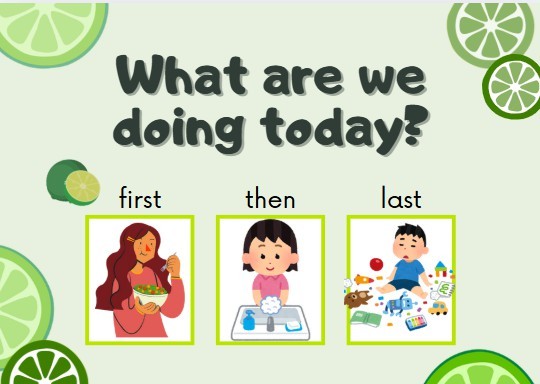Whether it’s switching off the TV or going off the schedule, transitions can feel like small tsunami waves for a child. They are inconvenient, confusing, overwhelming, and deeply distressing. All these emotions for a child, no wonder they’re having a difficult time moving from one activity to another. But, there’s a way to support these transitions by tuning into the needs of the child.
Why are transitions so difficult?
Transitioning is a brain-based skill which requires focus, flexibility, and emotional control. For children with autism, ADHD, or sensory processing challenges, repetitive behaviours can feel regulating. But, if they’re followed by resistance to change, it can disrupt daily routines and cause a great deal of distress.
Let’s begin with the brain. Moving from one activity to another actually involves a set of mental skills, like paying attention, shifting focus, planning what to do next, and handling emotions. These are part of what’s called executive functioning. For kids with ADHD or autism, these skills don’t always come easy. So when you say something like “Time to clean up,” and your child starts to cry or shuts down, what’s happening is that their brain is still stuck in the last thing they were doing. They’re not ignoring you; they just haven’t made the leap from their preferred activity to the next.
Another important aspect is sensory stimulation. Imagine you’re sitting in a calm, quiet room and then suddenly you step out onto a loud, busy street full of honking cars and flashing lights. That kind of shift can feel like a shock to the system. It’s not just overwhelming for children, it can be unsettling for any of us.
But here’s the key difference: as adults, we’ve had years to learn how to cope with sudden changes. We might take a deep breath, put on headphones, or look away from the chaos. Children, especially neurodiverse children, may not have those tools yet. For some kids, even small changes in sound, light, or touch can come too fast or feel too intense. This is called sensory overload: when the body takes in too much at once and doesn’t know how to filter it. For others, it’s the opposite. They might need more sound, movement, or pressure to feel calm and connected. This is known as sensory underload, and these children may seek out big movements or noises to help their bodies wake up.
When we ask a child to switch tasks or environments quickly, we may also be asking their body and brain to adjust, even if they’re already feeling too much or not enough. That can be incredibly distressing, especially when they don’t yet have the words to explain what they’re experiencing.
Then there’s the emotional side. For many children, especially neurodivergent children, certain activities bring comfort, joy, or a sense of control. Leaving that behind can feel like losing something important. A child who’s deeply involved in building blocks or watching a video may find it hard to stop because it’s not just “play”; it’s their safe place, their way of calming down. So when we ask them to switch suddenly, we’re also asking them to let go of that safety. Of course it feels unsettling, confusing, and unsafe.
Another layer to all this is how quickly a child can take in information. Some children process things differently, which means they might need extra time to understand that a change is coming and prepare for it. Dawson and Watling (2000) found that when kids don’t have that time, just using words like “Time to go” often doesn’t work. It’s not that they’re ignoring us, they might just still be figuring out what we said.
So, what can we do to help?
- Use Visual Cards (Banda & Grimmett, 2008)

One really effective tool is using visuals. Picture schedules or simple “first-then” cards (like “First dinner, then cartoon”) can make the flow of the day clearer. They take something abstract like the idea of later, and turn it into something your child can actually see. This helps reduce confusion and can make transitions feel more manageable.
Another way to help is by giving time warnings. A gentle “Five more minutes” or a visual timer can help your child shift to activities gradually. This allows the child to move on easily and work out the transitions themselves.
- Transition Objects (Dettmer et al., 2000)
Some kids benefit from a transition object — something small and comforting that they can take with them from one activity to the next. It could be a toy, a fidget, or even something connected to the activity they’re leaving behind. These little objects can offer a sense of continuity and control, and help ease the in-between moment.
- Consistency and Predictability
Keeping your language consistent also helps. Using the same phrases like “Two more turns, then we’re done” creates predictability. Research even suggests predictability over consistency (Jay Sevin, 2015); giving a notice in advance about any change in tasks or plans can help children prepare for transitions. Over time, your child learns what to expect, and the routine itself becomes comforting.
- Altering the time (Sevin et al, 2015)
Sometimes, transitioning can become difficult if the activity is suggested during or at the time of another preferred activity. For example, if your child loves playing cricket but you want them to finish their snack, suggesting eating the snack before or after starting to play cricket can help make the transition easier. Scheduling activities according to your child’s preference and embedding them in the visual schedule can also act as motivation to finish the activity.
- Admit it’s difficult
Don’t underestimate the power of simply naming what your child is feeling. Saying something like “I know it’s hard to stop when you’re having fun” shows your child that you see them. You’re not just telling them what to do, you’re connecting with how they feel. This kind of emotional validation can go a long way. Stuart Shanker (2017) talks about how important co-regulation is when adults stay calm and connected, it helps children find their way back to calm too.
Sometimes, it is easy to get lost in the guilt of not understanding what your child needs, especially when they’re crying or shutting down. If you are struggling with the guilt of not doing enough for your child, find a self-help worksheet at the end of this blog – Am I Doing Enough for my Child? As people who want the best for their child, parents sometimes neglect themselves. It is crucial that you take care of your needs, wants, and work on regulating your emotions. This is what helps your child feel confident in themselves too. Transitions will still be challenging at times. But they don’t have to feel like battles. With the right support, they can become moments of connection, growth, and trust.
A Reminder for the Parents
- I took a deep breath before responding
- I reminded myself this isn’t bad behavior but something that i can understand
- I stayed present and calm (even if it wasn’t perfect)
Yes, It can be overwhelming. Let us support you through every step
Contact us: reachout@kidable.in or +91 9266688705

